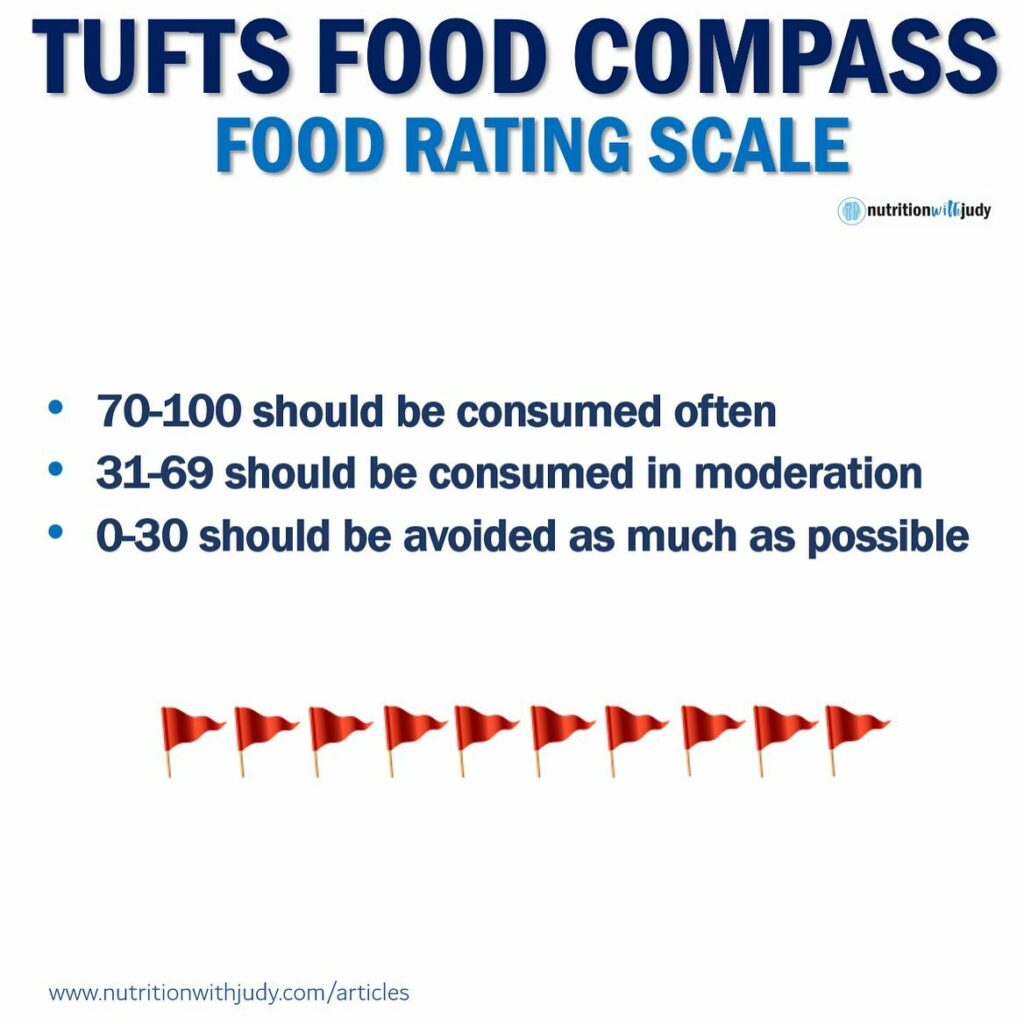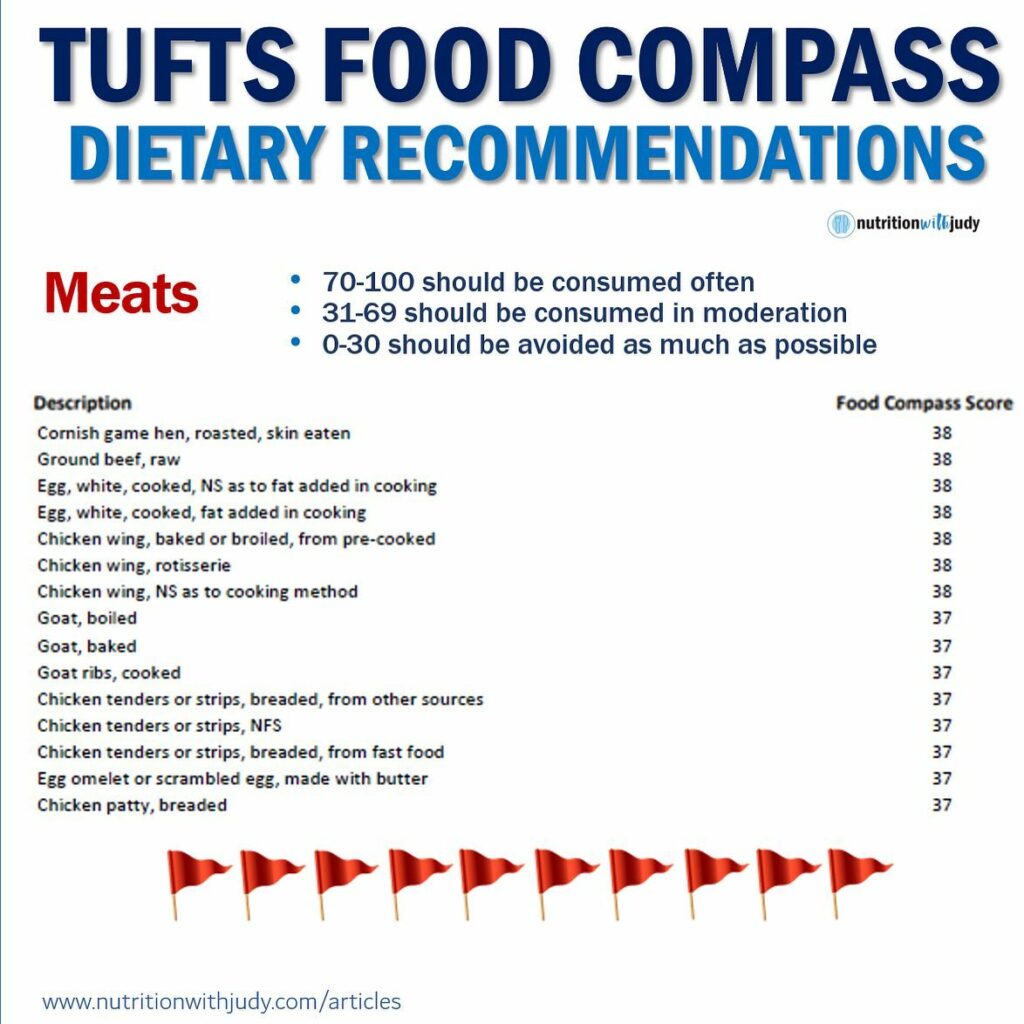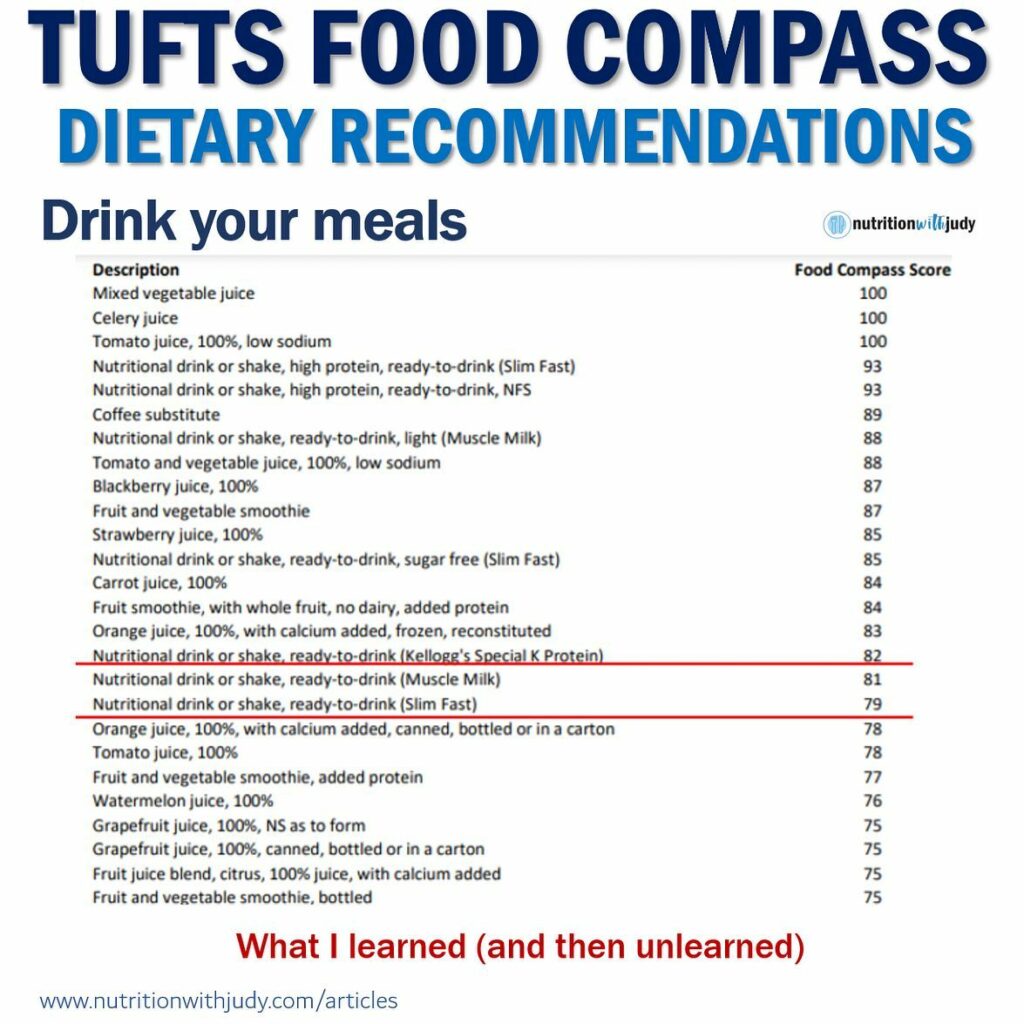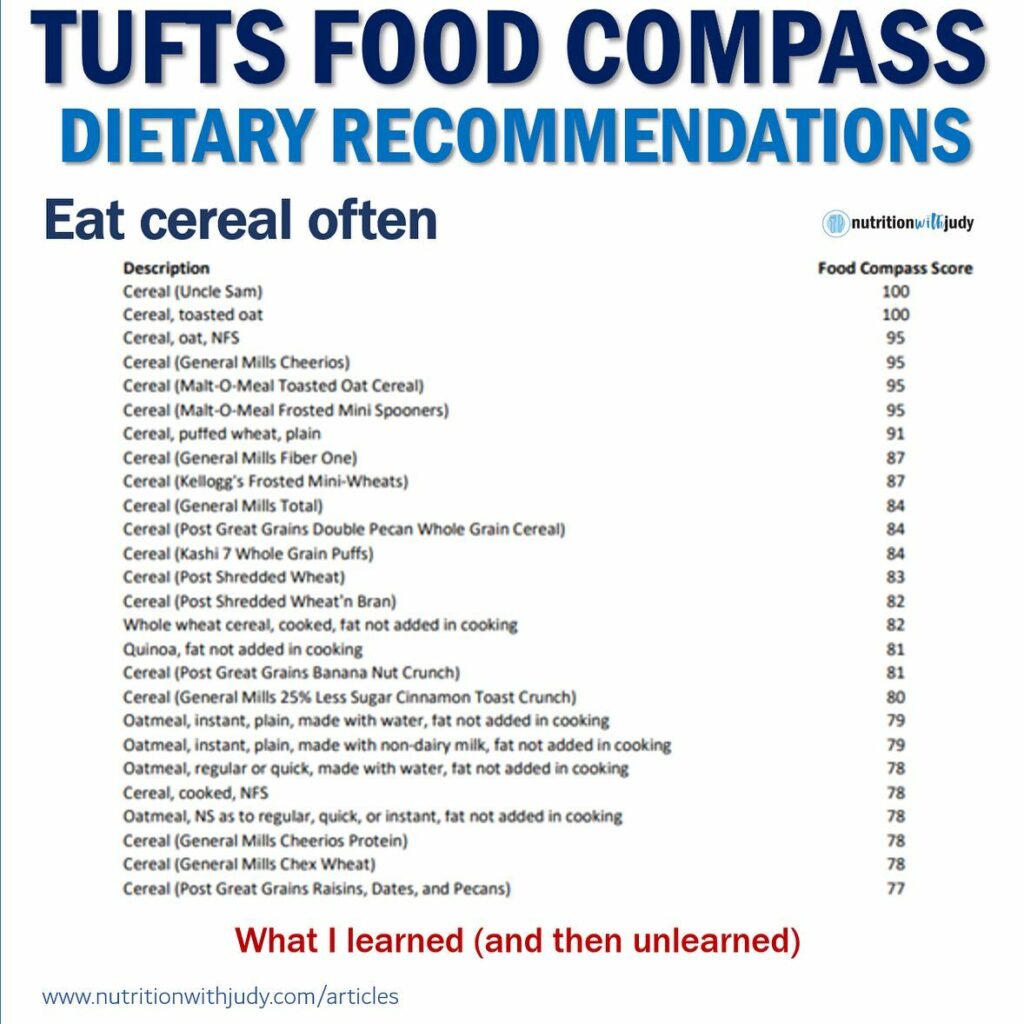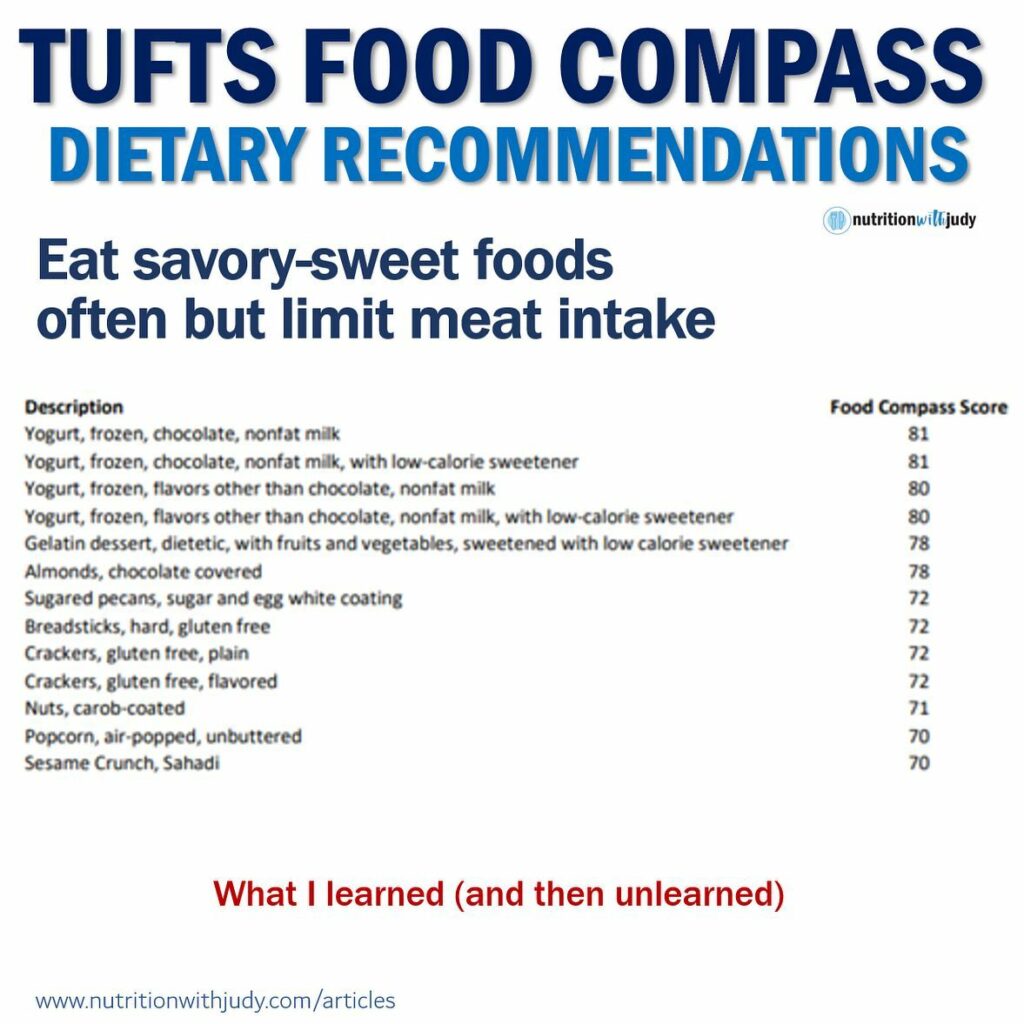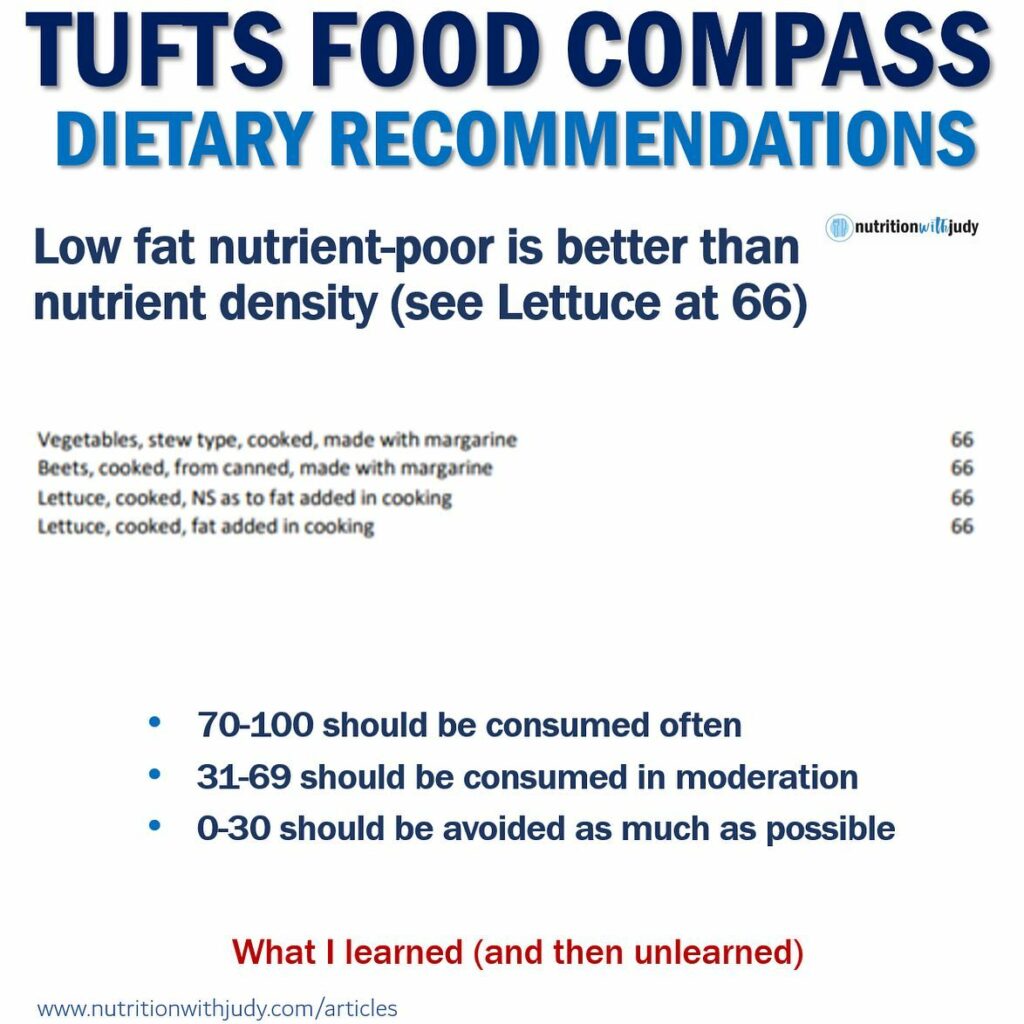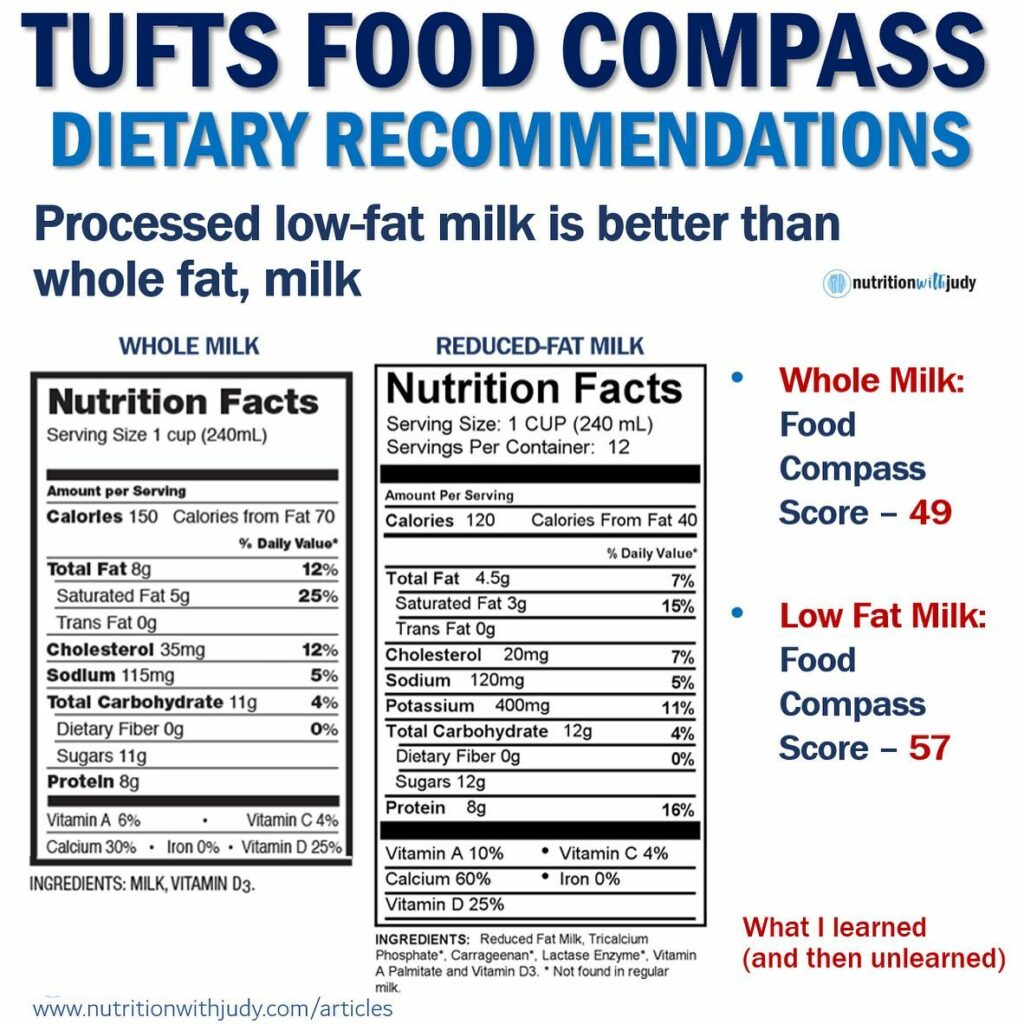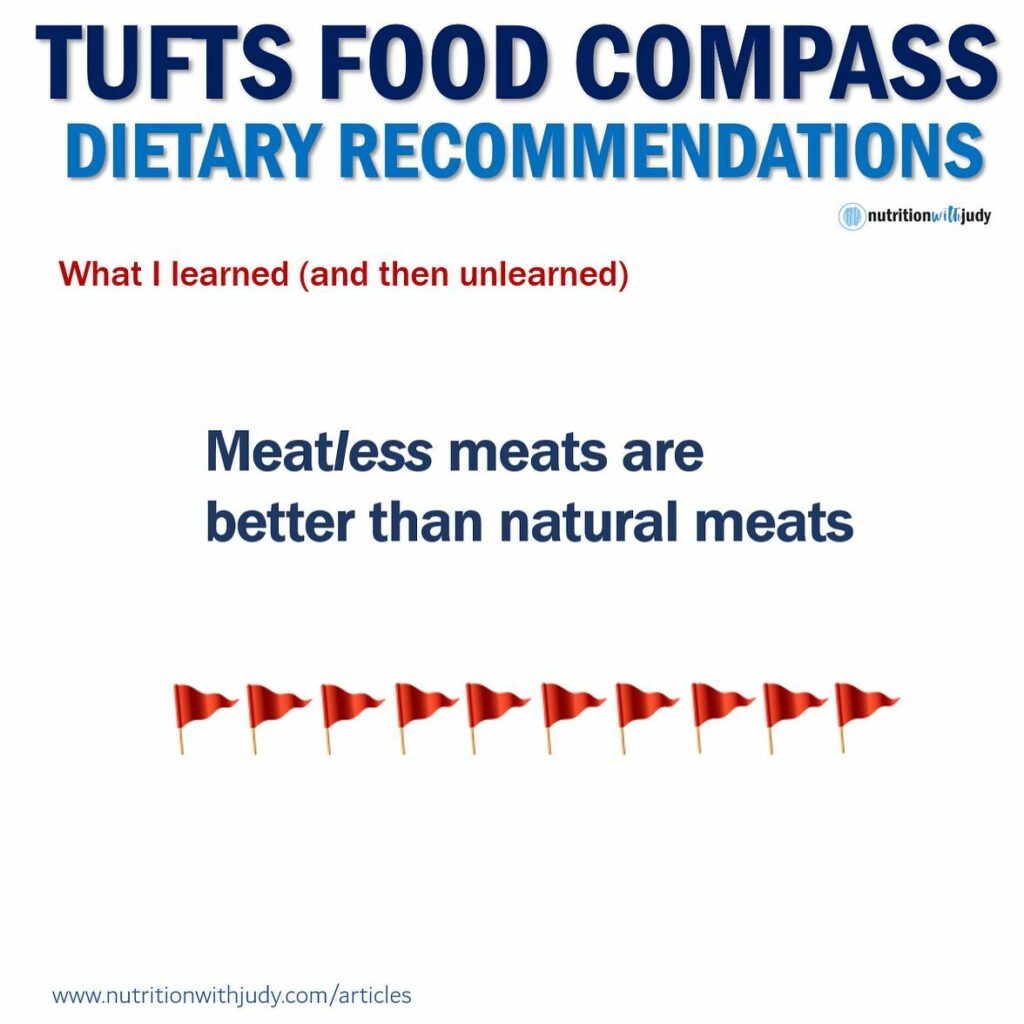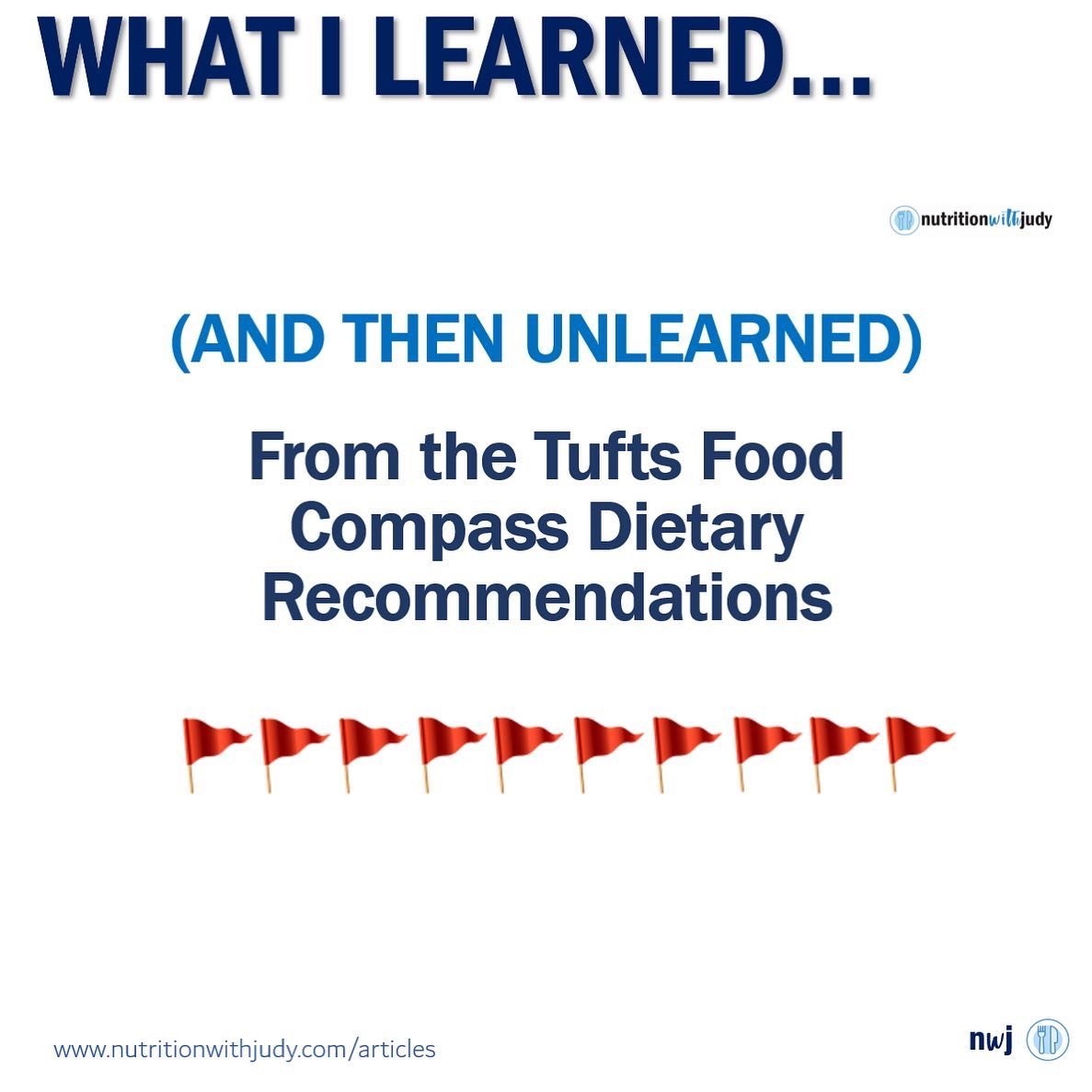

Microblog: The Red Flags of the Tufts Food Compass


I sat down and did some lengthy research into Tuft’s Food Compass Guide.
🚩I wasn’t thrilled with what I found and decided to write an article that sums up my thoughts.
🧠If you heard about this food compass guide, I highly recommend reading my article, here.
❗️I’m afraid that food ratings like the Compass Guide will soon become the norm and unsurprisingly, it negatively rates meat.
Make sure to share with friends and family that need to read it!
EXCERPT:
Based on the Food Compass Guide, here’s what I learned:
1) You should limit fats from animals but can eat all the canola and vegetable oil you want.
You can read my post on Canola Oil and WHO: https://www.nutritionwithjudy.com/world-health-organization-recommends-canola-oil/
2) Meatless meats are better than natural meat
You can read my post on Beyond Meat: https://www.nutritionwithjudy.com/beyond-meat-meat-alternative-solution/
3) You can eat these savory-sweet foods often (see image below) but limit meat-intake
4) Drink your meals
5) Eat cereal often
6) Processed fruits and sugar are better than most whole grains, meats, and dairy
7) Low fat nutrient-poor trumps nutrient density (see Lettuce at 66)
8) Processed low-fat milk is better than whole, real milk
⚠️The Food Compass and its dietary considerations are, unfortunately, confusing to a diabetic (for example).
🚩The Food Compass does not do any justice to this population—a population of 34.2 million diabetics and 88 million prediabetics. (Source)
We can do better.
Read more:
https://www.nutritionwithjudy.com/tufts-food-compass-guide-a-nutritionists-review/
